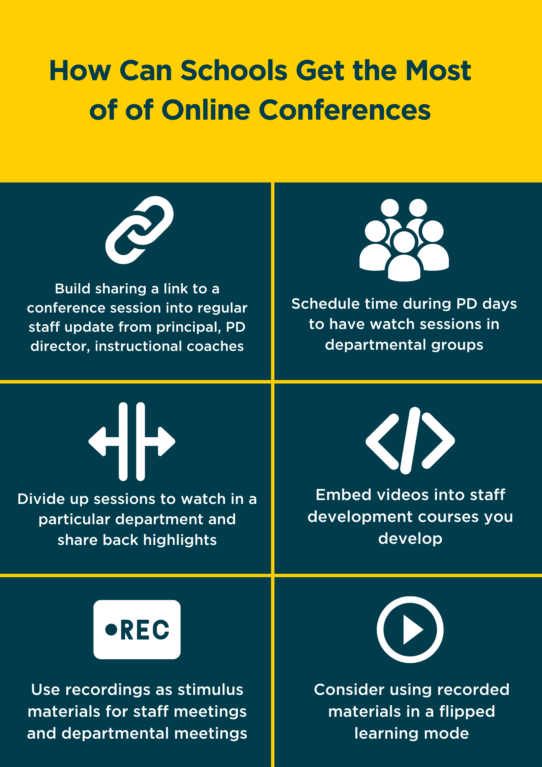How do you measure the impact of professional learning?
Before we get into that tricky question it is worth asking – what is professional development and why do we do it? PD (or CPD) is about many things – personal development, re-skilling, department or school alignment. However, from the perspective of leadership, professional development is often an enabler of change management in a school and so we’ll look at online conferences through this lens.
You have probably seen visuals like the one below before:

This is a familiar pattern for anyone involved in a change initiative in any organization. The shape of the chart may change a bit depending on size, age, and culture but the pattern is almost always there.
You often see the same pattern within schools with professional development engagement more generally. Usually, it is a smaller group of innovators that are pushing new ideas, attending courses and conferences. A slightly larger group in the early majority are open to ideas if it is delivered to them (or they are “sent”) and then on the other side of the curve are a group that is slower to adopt, or perhaps even actively resistant to change! As an example – for the innovators on the left it is inconceivable that you would not use your PD allocation each year and this group may even pay the cost of attending events themselves to ensure they continue to develop their professional learning profile. Equally, in the same organization, you will always find a group that doesn’t use their professional learning budget allocation.
When it comes to our online conferences we find that engagement for any one school matches closely with ‘the curve’!. Those attending the live event tend to be a smaller percentage of the overall possible number of attendees. When you think about it this makes sense – depending on the timing of the sessions, people may be sleeping, teaching, in a meeting, dealing with childcare, etc. We spread our conferences over many days and have sessions at a variety of hours so that all attendees will have the opportunity to engage in a live session if they wish.
We find that over the course of an online conference, and this applies for most schools, the majority of attendees will have made time to watch at least some live sessions – certainly on the aggregate far more than would have had exposure to the keynote or presentation if they had sent a selection of teachers to a face to face conference.
So, as with a face to face event, it is the early adopters that attend events live and engage “early and often.” Schools deal with the financial and time constraints of face to face events by asking conference attendees to share their learning from the conference in subsequent staff meetings, sometimes by writing blog posts, or articles, etc. However, one very major difference is that an online conference doesn’t end when the live sessions conclude. All presentations are recorded allowing the ideas and content to be shared with everyone as and when they have time available.
So, the numbers logging in and viewing live only tells part of the story. We know that in many schools, departments will watch either the live session or view the recording at a later date using a projector or TV. Some of our School Pass holders have built this into their professional development days providing time for departments to select sessions to watch as a team (or snippets of sessions) for discussion and reflection.
We encourage school pass holders to get their staff to engage with the conference live but also think of it as a year long investment. Just as you would not judge a change initiatives success by the number of early adopters in the first two weeks, you should look at an online conference as something that should keep on giving after the conclusion of the live sessions and connecting more and more of your staff with a wealth of resources and ideas.

